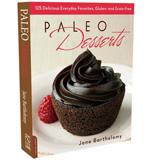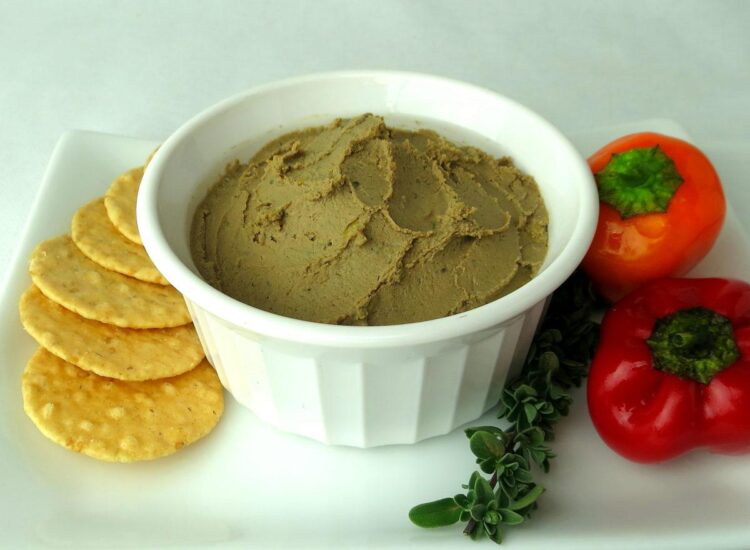Liver is more than a seasonal delicacy. It is one of Nature’s most potent superfoods! This pate tastes rich and creamy, much like traditional pâté de foi gras. The main difference is you can make it in 15 minutes or less. I wanted a way to prepare liver with minimal cooking for a soft texture, and to preserve essential nutrients. This came out velvety smooth and luscious. Use any type of pasture-fed liver such as chicken, beef, duck, etc. Refrigerate up to 3 days. Or you can freeze in ice cube trays overnight; then transfer cubes to a zip-lock freezer bag, to enjoy a little at a time. One cube makes an economical, high-nutrition meal. The nutrient profile of beef liver far exceeds that of apple, carrot or red meat – See chart at bottom of page. To make this pate super-smooth, you’ll need a food processor or a high speed blender. Yield: 2 cups Paleo Liver Pâté.
So what makes liver a superfood?
Quite simply, liver contains more nutrients, gram for gram, than any other food. Liver offers:
• An excellent source of protein
• All the B vitamins, especially B12
• Nature’s most concentrated source of vitamin A
• CoQ10, an important nutrient for the blood
• One of the best sources of folic acid
• A highly usable form of iron
• Trace elements like copper, zinc, and chromium
• An unidentified anti-fatigue factor that makes it a favorite with athletes and bodybuilders
Why Eat Grass-Fed Liver?
When you eat organ meats from animals raised on fresh pasture with no hormones, antibiotics or commercial feed, you’re getting higher nutrients and fewer toxins than meats from commercial feedlots. As an added bonus, meats from pasture-raised animals have 2-4 times more omega-3 fatty acids than meats from commercially-raised animals.
Many people avoid liver thinking that it contains toxins.
While the liver’s role is to neutralize toxins, poisons, and chemicals in the body, it does not store the toxins. It simply neutralizes them and sends them through the digestion to be eliminated. Toxins that are not removed are most likely to accumulate in fatty tissues and nervous system.
The enjoyment of liver and liver pate is older than we can know.
Ancient hunter-gatherers prized organ meats, especially the liver, which they ate raw or lightly cooked. In many traditional cultures, only the organ meats were consumed; the muscle meats were either discarded or dried. According to traditional Chinese medicine, eating liver builds the blood; and it is especially beneficial in wintertime, to help prepare the body for spring. Liver pate was prized in ancient Greece. During the Middle Ages and Renaissance in Europe it was baked in communal ovens. French haute cuisine made it world famous as pate de fois gras.
This simple recipe is way easier, and just as luscious. Try it with raw veggies, on a Paleo cracker, or a slice of Paleo toast!
Ingredients
- 1 pound liver (chicken, duck, beef, etc.)
- 2 tablespoons coconut oil
- 2 cloves garlic
- 1/4 cup minced onions or shallots
- 1 tablespoon lemon juice
- 1/4 cup full fat coconut milk
- 1/8 teaspoon allspice
- 2 teaspoons dry rosemary
- 1/4 teaspoon ground mustard
- 1 teaspoon chopped, fresh thyme, optional
- 1/2 cup melted coconut oil (place the container in a bowl of warm water) or melted bacon fat.
- 1/4 teaspoon unprocessed salt, or more to taste
- 1/8 teaspoon ground black pepper
Instructions
- Trim the liver to remove any spots, and cut into coarse 1-inch chunks.
- Melt coconut oil over medium heat in a skillet. Add garlic and onions or shallots, and sauté briefly until they begin to soften, about 1 minute. Add the liver and sauté briefly until it is just barely cooked through, but not tough.
- Place the mixture in a blender or food processor. Add lemon juice, coconut milk, and seasonings. Cover and process until the liver is a smooth paste. This will be about 30 seconds in a super-blender. In a regular blender or food processor it will take several minutes, and it helps to open the machine, stir the mixture away from the sides, and process again a few times
- Add melted oil, salt and pepper to taste. Process again until the mixture is very smooth. Adjust seasoning to taste.
- Pour into serving bowl, storage container, or ice cube trays. Chill to firm up even more. Make sure the containers are completely covered with plastic wrap directly on the pate, to prevent oxidation.
It’s a super-superfood.
| APPLE (100 g) |
CARROT (100 g) |
RED MEAT (100 g) | BEEF LIVER (100 g) | |
| Calcium | 3.0 mg | 3.3 mg | 11.0 mg | 11.0 mg |
| Phosphorus | 6.0 mg | 31.0 mg | 140.0 mg | 476.0 mg |
| Magnesium | 4.8 mg | 6.2 mg | 15.0 mg | 18.0 mg |
| Potassium | 139.0 mg | 222.0 mg | 370.0 mg | 380.0 mg |
| Iron | .1 mg | .6 mg | 3.3 mg | 8.8 mg |
| Zinc | .05 mg | .3 mg | 4.4 mg | 4.0 mg |
| Copper | .04 mg | .08 mg | .18 mg | 12.0 mg |
| Vitamin A | None | None | 40 IU | 53,400 IU |
| Vitamin D | None | None | Trace | 19 IU |
| Vitamin E | .37 mg | .11 mg | 1.7 mg | .63 mg |
| Vitamin C | 7.0 mg | 6.0 mg | None | 27.0 mg |
| Thiamin | .03 mg | .05 mg | .05 mg | .26 mg |
| Riboflavin | .02 mg | .05 mg | .20 mg | 4.19 mg |
| Niacin | .10 mg | .60 mg | 4.0 mg | 16.5 mg |
| Pantothenic Acid | .11 mg | .19 mg | .42 mg | 8.8 mg |
| Vitamin B6 | .03 mg | .10 mg | .07 mg | .73 mg |
| Folic Acid | 8.0 mcg | 24.0 mcg | 4.0 mcg | 145.0 mcg |
| Biotin | None | .42 mcg | 2.08 mcg | 96.0 mcg |
| Vitamin B12 | None | None | 1.84 mcg | 111.3 mcg |
Chart courtesy of Chris Kresser. http://chriskresser.com/natures-most-potent-superfood





No Replies to "Paleo Liver Pâté"